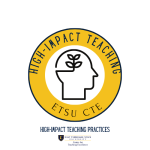40 Question Formulation Technique (QFT)
The Question Formulation Technique (QFT) is a structured strategy designed to empower students by teaching them how to generate, refine, and use their own questions. This approach encourages curiosity, critical thinking, and active engagement, placing students at the center of their learning process. QFT is applicable across disciplines and grade levels, supporting inquiry-based and student-centered learning.
Steps in QFT
- Present a Question Focus (QFocus):
- Provide students with a stimulus, such as a statement, visual, or scenario, to spark curiosity and focus their thinking.
- Importantly, the QFocus should not itself be a question.
- Example: A visual of melting ice caps paired with the statement, “The Arctic is losing ice at an unprecedented rate.”
- Students Generate Questions:
- In small groups or individually, students brainstorm as many questions as possible related to the QFocus.
- Questions should be numbered in a list, and should be written down exactly as stated. Any statements should be turned into questions.
- During this step, all judgment, critique, and discussion of questions are suspended to encourage creative and uninhibited thinking.
- Categorize Questions:
- Students identify their questions as either closed-ended (questions that can be answered with a “yes” or “no” or a single fact) or open-ended (questions requiring explanation or exploration).
- Students practice converting closed-ended questions to open-ended ones and vice versa, learning the strengths and uses of each type.
- Prioritize Questions:
- Students prioritize the most relevant, interesting, or actionable questions based on the goals of the activity or assignment.
- Example: From a list of questions about the Arctic ice caps, students might select the top 2-3 questions that help them better understand ice cap melt, such as, “What causes ice caps to melt faster in certain regions?” or “How does melting ice affect ecosystems?”
- Students examine where among their question list their top questions occurred, and discuss how the process of generating multiple questions can help, at times, to uncover better questions.
- Plan Next Steps:
- Using their selected questions, students plan how to explore or investigate further. This could include research, experiments, or discussions.
- Reflect on the Process:
- Students and instructors reflect on the QFT process, discussing its impact on learning and the value of asking good questions.
Benefits of QFT
- Empowers Student Ownership of Learning:
By generating and selecting their own questions, students take a more active role in their education, fostering intrinsic motivation and curiosity. - Develops Critical Thinking and Metacognitive Skills:
The process of categorizing, refining, and prioritizing questions enhances students’ ability to think critically and reflect on their thinking process. - Encourages Inquiry Across Disciplines:
QFT is versatile and can be adapted for use in science, humanities, arts, and beyond, supporting the inquiry-based and problem-based learning models.
Examples of Question Focus Prompts
- Science: In a biology course, students examine a QFocus such as a diagram of a food web with missing connections. They generate questions like, “What happens when a predator is removed from an ecosystem?” or “How do invasive species affect this food web?”
- History: In a history seminar, students analyze a provocative quote like, “History is written by the victors.” Questions might include, “Who decides which events are recorded?” or “How can we learn from marginalized perspectives?”
- Art: In a visual arts class, students study a surrealist painting as the QFocus. Questions might include, “What emotions does this piece evoke?” or “What might the artist be saying about society?
High-Impact Tips from ETSU Instructors
 In her graduate level Advanced Educational Psychology, ETSU CTE Director Dr. Alison Barton conducts in-class QFTs to create student curiosity about some of the articles students are assigned to read.
In her graduate level Advanced Educational Psychology, ETSU CTE Director Dr. Alison Barton conducts in-class QFTs to create student curiosity about some of the articles students are assigned to read.
For example, one QFocus is “Caution: Praise Can Be Dangerous” (the title of an article by C. Dweck).
In groups, students go through the QFT process and then each take one of the top questions generated from their group to research using the article (or beyond, if answers are not in the article), which they submit to D2L before the next class meeting. Students reconvene in the next class to discuss and reflect on their findings. Students who miss class are asked to generate and prioritize a list of questions that they submit, and then research their top question before the next class.
Alison Barton | EDFN 5200 Advanced Educational Psychology
The Question Formulation Technique is an adaptable and transformative tool that places the power of inquiry into students’ hands. By learning how to ask and prioritize questions, students not only engage more deeply with content but also develop lifelong skills for learning and problem-solving.
Sources and Attribution
Primary Source
This section is informed by and adapted from:
- Right Question Institute. Question Formulation Technique (QFT) for Research Elements.
- Available at: Right Question Institute
Use of AI in Section Development
This section was developed using a combination of existing research, expert-informed insights, and AI-assisted drafting. ChatGPT (OpenAI) was used to:
- Synthesize and structure key concepts from the Question Formulation Technique (QFT) into a cohesive and accessible guide for educators.
- Clarify best practices for using QFT to develop student inquiry, critical thinking, and research skills.
- Enhance readability and coherence, ensuring that the QFT strategies are both research-based and practically applicable in educational settings.
While AI-assisted drafting provided a structured foundation, all final content was reviewed, revised, and contextualized to ensure accuracy, pedagogical effectiveness, and alignment with cited sources. This section remains grounded in institutional best practices and respects Creative Commons licensing where applicable.
Media Attributions
- CTE Badges (6)
